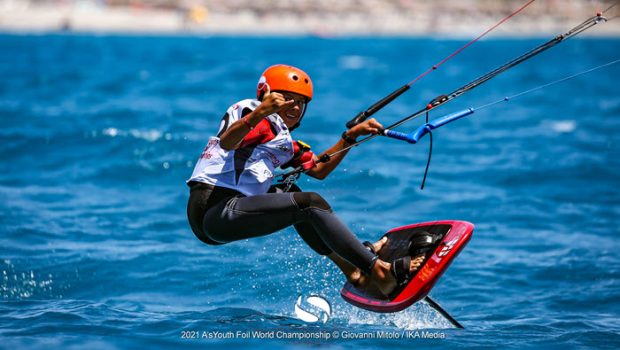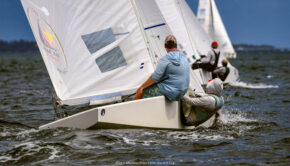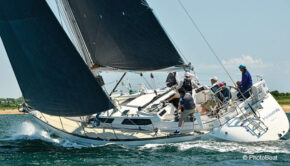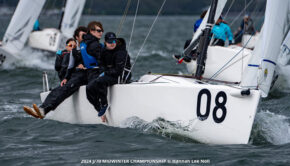Building a pathway to the podium
Published on April 5th, 2022
It is customary for equipment used in the Olympics to have smaller siblings for youth sailors with Olympic aspirations to gain skill. All the established events from Tokyo 2020 – 49er, ILCA 6/7, 470, and Nacra 17 – have them, and now the Formula Kite class does too.
The kiting culture has evolved outside the mainstream, but its inclusion in the Paris 2024 Olympics has brought it into the fold with other high performance classes. To help progress its growth, the International Kiteboarding Association (IKA) is building a pathway to the podium:
The introduction of a class that will upskill young athletes aspiring to compete in the Formula Kite class has been a long-standing idea. The objective was to provide a means for young athletes to engage with the foil racing revolution, using affordable one-design equipment that is safe and widely available but at the same time modern and exciting.
The process, led by the IKA executive committee, included brainstorming with stakeholders to decide the characteristics of the equipment, the age of the sailors and the format of the competition, followed by a tender which saw several bids received from the industry.
The result was the A’s Youth Foil class, with athletes competing on identical SABfoil carbon hydrofoils and boards, and Ozone Edge kites restricted to three sizes, 6m, 9m and 13m. Everybody has the same equipment, removing any element of material superiority from the competition.
Although the foils are not as sharp as the Formula Kite foils, they are still high-performance foils giving plenty of adrenaline to the riders and the spectators alike. And while the kites are inflatable tube kites which make handling and relaunching a lot easier and safer, the sharpness of the maneuvers can result in epic racing.
The format of racing is the same as in the Olympic Event, directly linking the pathway class to the Olympics while providing some exciting final races in the process. Events feature an opening series, where competitors aim to finish among the top 14 to proceed into the medal series. As a bonus, the top 2 ranked kitefoilers qualify directly to the finals, carrying forward two and one race wins respectively.
Riders placed from 3rd through to 14th are split in two groups and sail in the semi-finals, aiming to top their group and qualify to the finals, however, without carrying forward any race win. Once the four are in the finals, they sail until one of them achieves three race wins. And while the overnight leader only needs to win a single race to claim the gold medal, the format is open to surprises.
Although the class’ debut coincided with the beginning of the pandemic, the racing debut in 2021 with Worlds and Europeans organized, saw fierce competition between sailors originating from a plethora of countries, already achieving the purpose of the class.
It is worth noting that Michail Nomikov from Russia, 2021 European champion and Worlds silver medalist in the A’s, went on to win the bronze medal in the Formula Kite class at the World Sailing Youth Worlds in Oman at the end of the year while Poland, Italy, and Israel showed that they have built a solid foundation to support their youth elite kitefoilers.
For 2022 the racing calendar is rich with national and international competitions happening across the globe. Worlds and Europeans are planned to feature two age categories: U15 for competitors born in 2008 or later and U17 for those born in 2006 or later.
And even though there have been some supply challenges for the kites due to the production in Vietnam being interrupted by the pandemic, it seems that the situation is finally improving.









 We’ll keep your information safe.
We’ll keep your information safe.